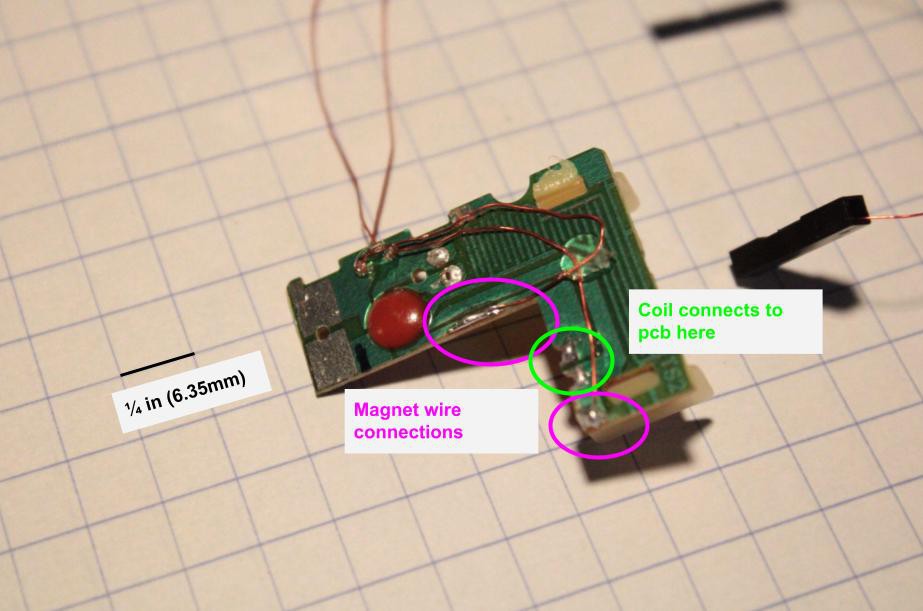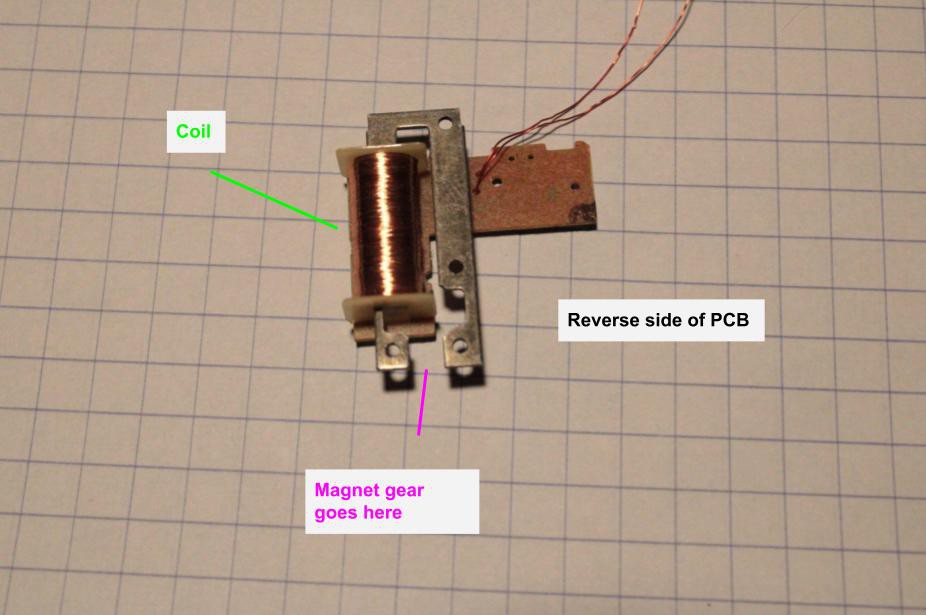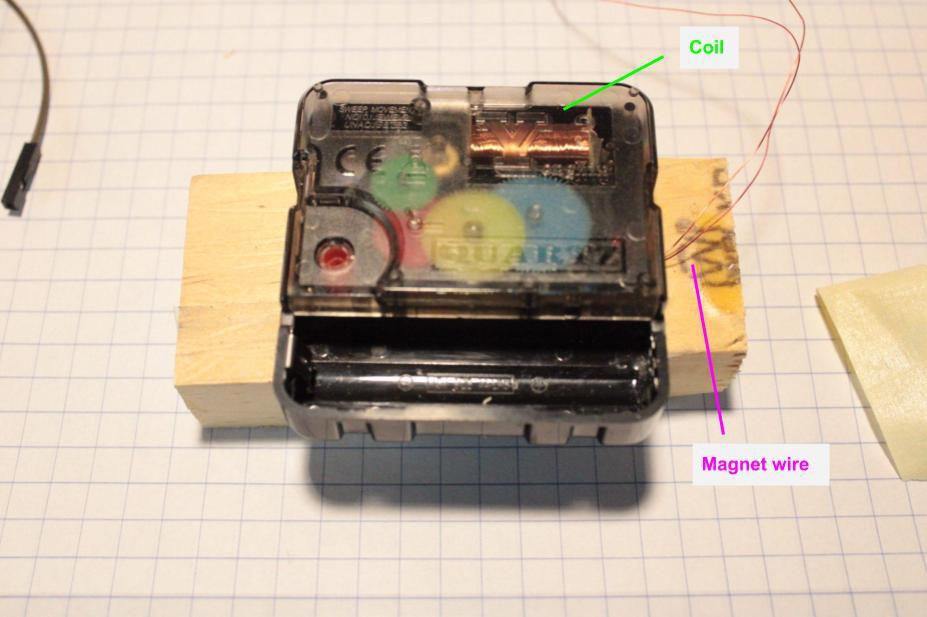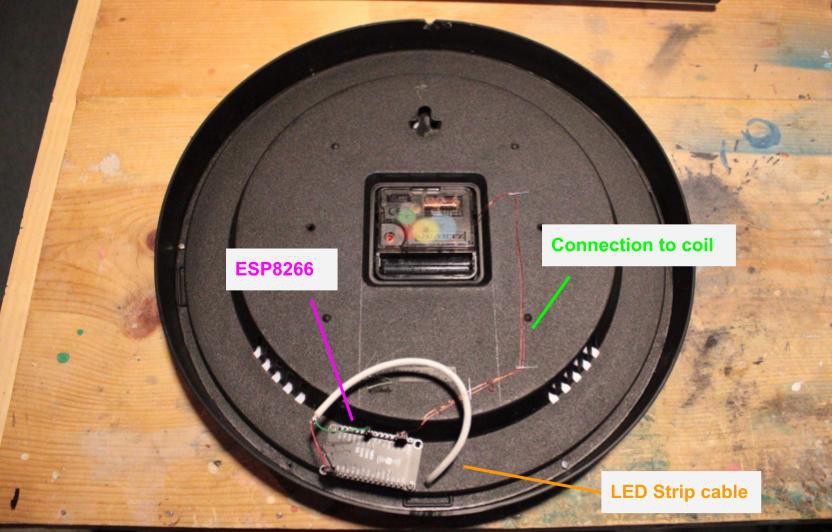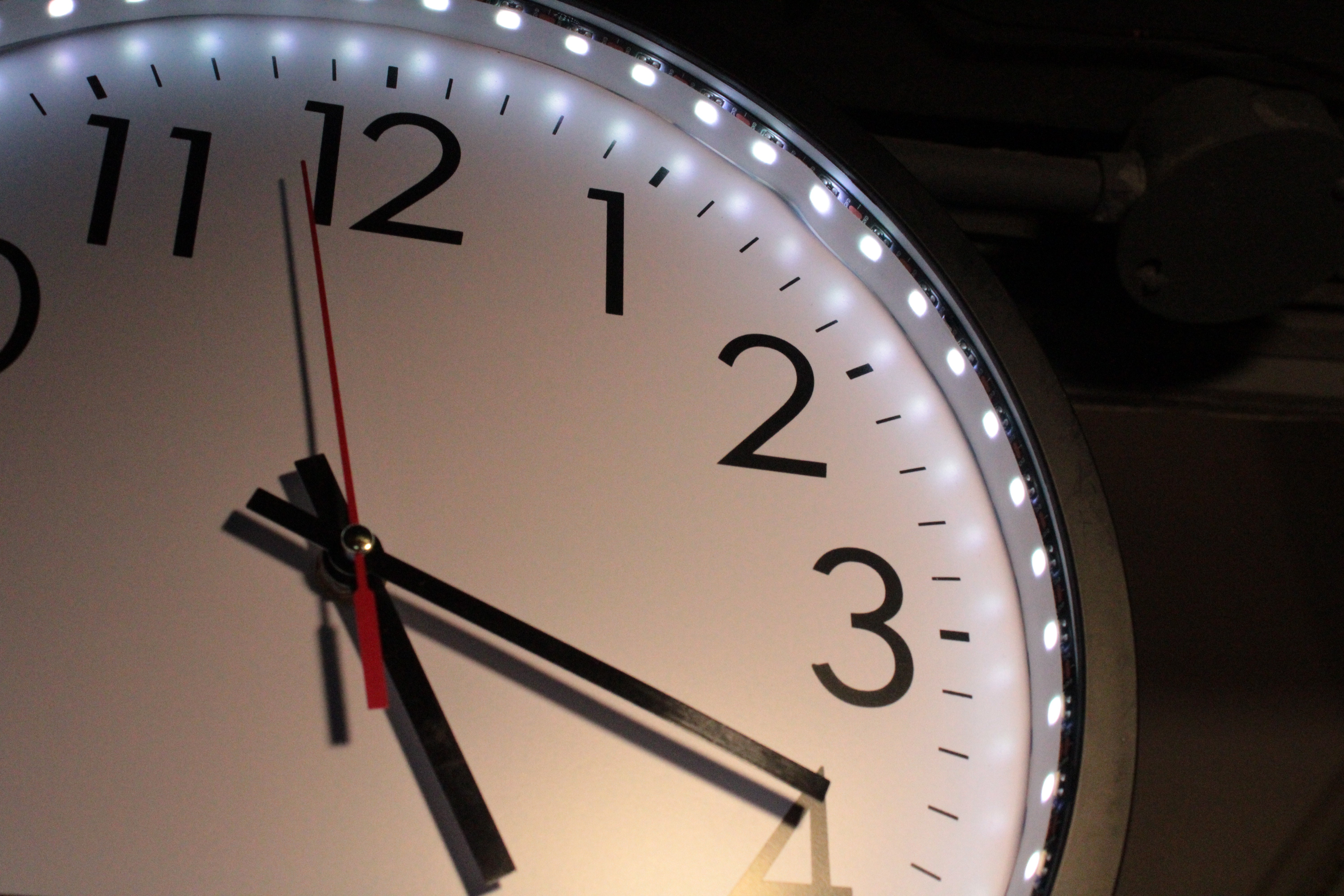-
How it works
03/29/2022 at 14:10 • 0 commentsIn my most recent design for this project, the clock's hands are moved by pulsing the clock's internal motor directly with a GPIO pin on the ESP8266. I was inspired to go with this method by this video: https://www.youtube.com/watch?v=XzXfadQXRn8. I soldered two thin pieces of magnet wire to pads on the clock PCB that connect to the coil on the board.
![]()
When the direction of current through the coil is switched back and forth, it spins a small gear with a magnet on it that drives the rest of the gears in the clock's movement.
![]()
When reassembled, the clock movement looks like this:
![]()
The clock movement fits into the back of the clock, and the completed control system looks like this:
![]()
-
Clock prototypes
03/29/2022 at 13:45 • 0 commentsMy first two ideas for controlling the clock were: to keep the clock's circuit entirely intact and just turn its power on and off with a GPIO on the ESP8266, or to remove the crystal and provide a wave from the microcontroller at a frequency based on how slow I needed the clock to move. The first idea did not work well because the movement of the hands with a one second pulse of power would vary unpredictably, making the clock very inaccurate. The second idea worked considerably better, but required more work from the microcontroller as it had to be putting out a wave constantly. It also lost accuracy pretty quickly. So, I went one level deeper into the clock and bypassed the internal circuits entirely, controlling the clock's motor directly from the microcontroller.
-
Stepping clock coil directly?
03/28/2022 at 16:27 • 0 commentsSo far I have been controlling the clock by pulsing the pads on the PCB where the crystal oscillator used to be. The ESP8266 board I am using to control the clock sends a square wave into the PCB with a frequency based on the amount of time it is set up to display (a life, a year, a weekend...) It seems to work pretty well, but I think accuracy could be increased by stepping the clock in a different way.
Inside the clock is a coil that when pulsed, steps the internal gearing of the clock. By connecting GPIO pins on the ESP8266 directly to that coil I should be able to control the clock's movement with better accuracy, especially over longer periods of time.
 Henry York
Henry York